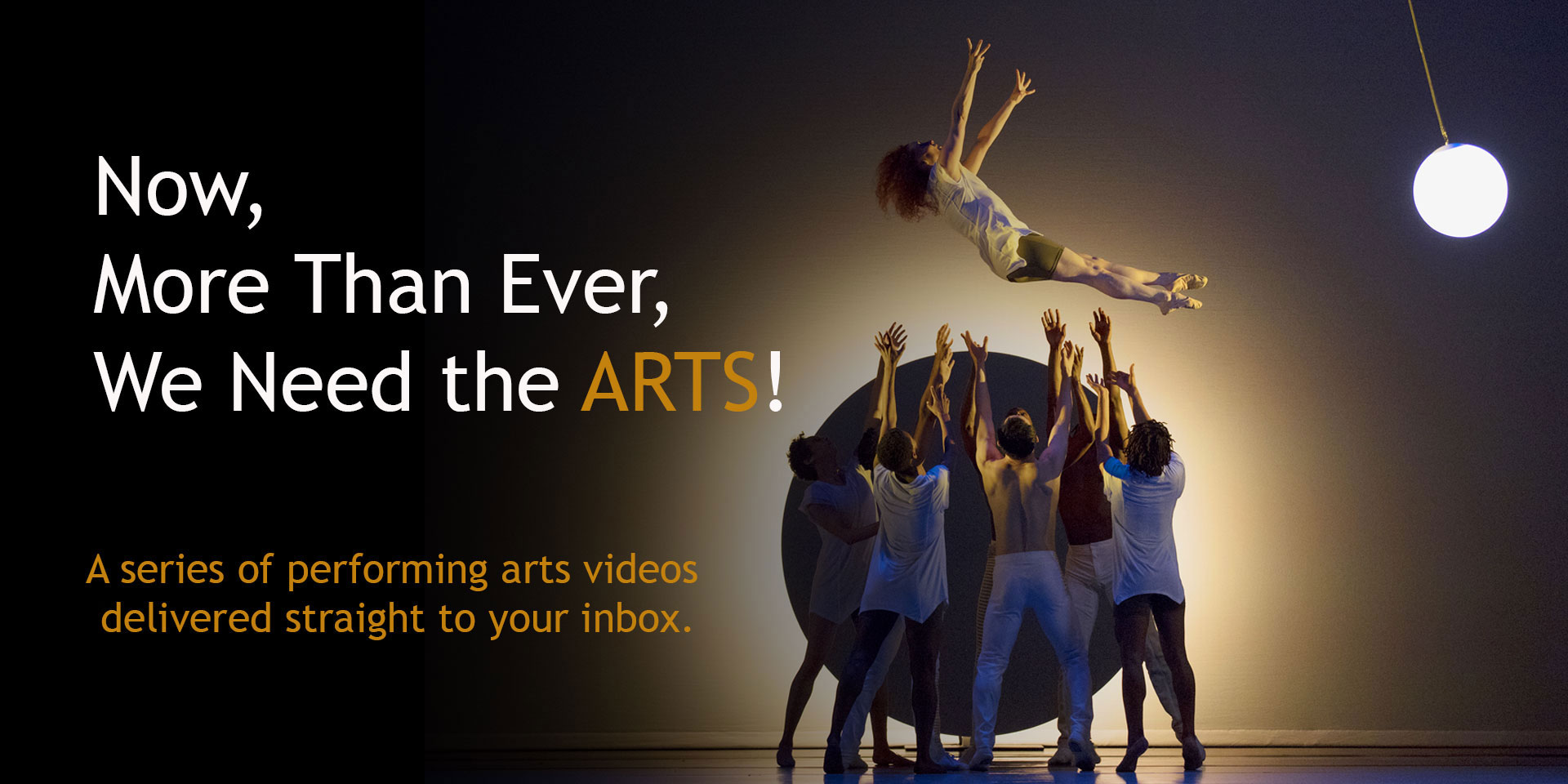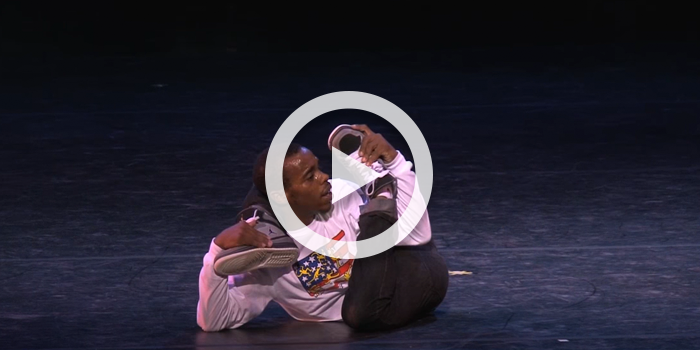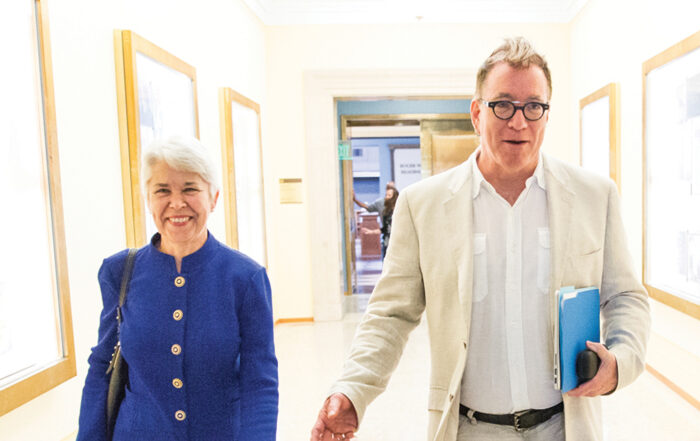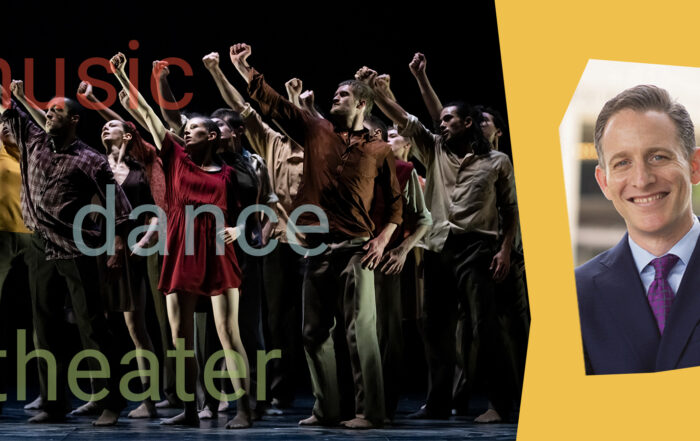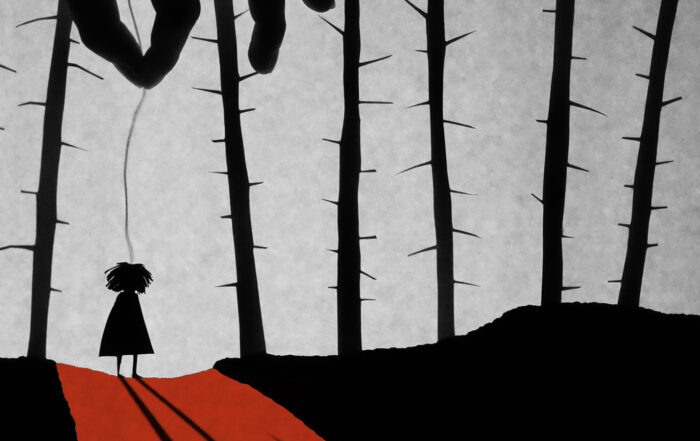Three instances in classical music and opera that touch on the subject of maternal affection, plus an Alvin Ailey classic.
Now, More Than Ever Issue 60
I’ve been thinking a lot about my mother recently and decided that I’d like to focus today’s issue of Now, More Than Ever on three musical moments that have become personally important to me, instances in classical music and opera that touch on the subject of maternal affection. I hope you enjoy—and are moved by—these powerful performances. Afterwards, we’ll close things out in high style with a classic and uplifting work from the archives of the Alvin Ailey American Dance Theater.
Brahms: “Ihr habt nun traurigkeit” from Ein deutsches Requiem, Op. 45
Barbara Bonney, soprano
Berliner Philharmoniker
Claudio Abbado, conductor
Swedish Radio Choir
Eric Ericsson Chamber Choir
(Note: If this video doesn’t begin at 43:11, please reset it. This section ends at 50:57.)
It’s a joy to think of Barbara Bonney, the happily retired American soprano who today fills her time running a clothing boutique she herself has designed in beautiful Salzburg. And when she does come to mind, I often find myself remembering her superb performance of this movement from Brahms’ A German Requiem with conductor Claudio Abbado and the Berlin Philharmonic. Bonney has that rare angelic quality—so quiet, so consoling—that makes her the perfect choice for this miraculous section from Brahms’ towering masterpiece.
This is such overwhelming music that it’s easy to forget how difficult it is to pull off successfully. The soprano soloist, after all, doesn’t actually begin singing until more than 40 minutes into the piece, which is just enough time for the throat to get cold after warming up before the performance. And then, to launch directly into something that covers such an enormous range while making it all sound so absolutely effortless… well, it’s an incredible achievement. You would never guess how hard Bonney is working here.
There’s something so remarkable about the Requiem, which was composed by someone not particularly religious and who came to the task from a wonderfully humane but secular perspective. I wept the first time I heard this section, and I continue to do so to this day—especially when I hear the promise, “As one whom his mother comforteth, so will I comfort you.”
English translations and sources:
And ye now therefore have sorrow;
but I will see you again,
and your heart shall rejoice,
and your joy no man taketh from you.
—John 16:22
As one whom his mother comforteth,
so will I comfort you.
—Isaiah 66:13
Ye see how for a little while I labor and toil,
yet have I found much rest.
—Ecclesiasticus 51:35
Handel: “Son nata a lagrimar” from Giulio Cesare
Jamie Barton, mezzo-soprano
Joyce DiDonato, mezzo-soprano
Members of the Metropolitan Opera Orchestra
Asher Fisch, conductor
Mothers don’t generally fare well in the opera world—their relationships with their offspring tend to be pretty complicated (if not downright appalling!). So it’s refreshing to encounter a mutually supportive and caring relationship like this one between Cornelia (Barton) and Sesto (DiDonato), the widow and son of Pompey, following a shocking discovery in Act I of Handel’s Giulio Cesare. It’s a particularly resonant example of mother-son bonding, here delivered (at Carnegie Hall for the 2016 Richard Tucker Gala) with great dignity and skill by two of my very favorite singers (and people!); I know Jamie and Joyce well, yet still marvel at how their warmth and affection leap out across the footlights.
This is the kind of performance and music I hope to remember until (and on!) my dying day.
I was born to weep, / I was born to sigh,
and I will ever mourn
for my sweet comfort.
If fate betrays us,
no more can I hope
for days of tranquility and happiness.
I was born to weep, etc.
Mahler: Finale from Symphony No. 3 in D minor
Vienna Philharmonic Orchestra
Leonard Bernstein, conductor
I have two very special memories about Mahler’s Third Symphony, both from a performance from nearly 25 years ago with the Los Angeles Philharmonic and conductor Esa-Pekka Salonen in their then-home of the Dorothy Chandler Pavilion. I was working for the orchestra at that time, and one day, my mother, who was then living in Orange County, drove up for dinner and the concert. My first memory of this performance is the length of the piece, especially since the line for the men’s room was so long prior to the start of the concert that I was unable to pay a visit. (Though the first movement was a bit uncomfortable, once I got caught up in the sweep of enormously scaled work, worldly concerns faded away.)
Orchestra and conductor were in top form that evening. What I recall most clearly, though, was a moment toward the end of the concert. In the midst of the full, pulsing grandeur of the symphony’s magnificent finale (a movement Mahler originally titled “What Love Tells Me”), my mother—who I believe had never heard the work—took my hand in her own, squeezing it firmly until the end of the performance. A lasting memory shared between mother and son.
Night Creature (1975)
Choreography by Alvin Ailey
Music by Duke Ellington
Alvin Ailey American Dance Theater
(Please note: Night Creature will be available on demand through Tuesday, April 27 at 4pm PDT.)
At Cal Performances, we’ve become happily accustomed to our annual residencies with the peerless Alvin Ailey American Dance Theater, an artistic partnership that extends back for more than half-a-century. During most of these performances, an eagerly anticipated and beloved highlight has always been the closing work, Ailey’s grand and glorious Revelations (1960).
But if Revelations is the perfect “show-stopper,” there’s another Ailey work I’ve grown to love—another masterpiece quite familiar to Zellerbach Hall audiences: Night Creature, a bubbly champagne cocktail of a dance that may well be the perfect “show-opener.” The company’s website describes this sensational work as:
… a perfect fusion of Ailey’s buoyant choreography and Duke Ellington’s sparkling music. At once wistful and sassy, it beckons viewers into a nocturnal world populated by jazz babies and night owls. This large ensemble work is full of such stars—strutting, leaping and slinking through a variety of dance idioms as they flaunt and flirt with each other and the audience. It’s the definitive dance homage to the exuberance of The Duke’s sophisticated symphonic work.
Here’s a video of the full work in all its considerable glory, featuring incredible dancing by Linda Celeste Sims, Vernard J. Gilmore, and the rest of this impeccable troupe.
Finally, it gives me true pleasure to remind you that the Ailey company will close out this spring’s Cal Performances at Home season with a very special streamed performance beginning on June 10 and available for on-demand viewing through September 8. Even more exciting, the program will feature the world premiere of a new work by the company’s resident choreographer, Jamar Roberts, widely praised for creating visceral, subtle works that engage artfully with contemporary issues such as gun violence and—most recently—the devastating effects that the pandemic and police misconduct have had on Black bodies and Black lives. I can’t wait to see what he has in store for us this time!
Now, More Than Ever Full Playlist
Now, More Than Ever Spotify Playlist


